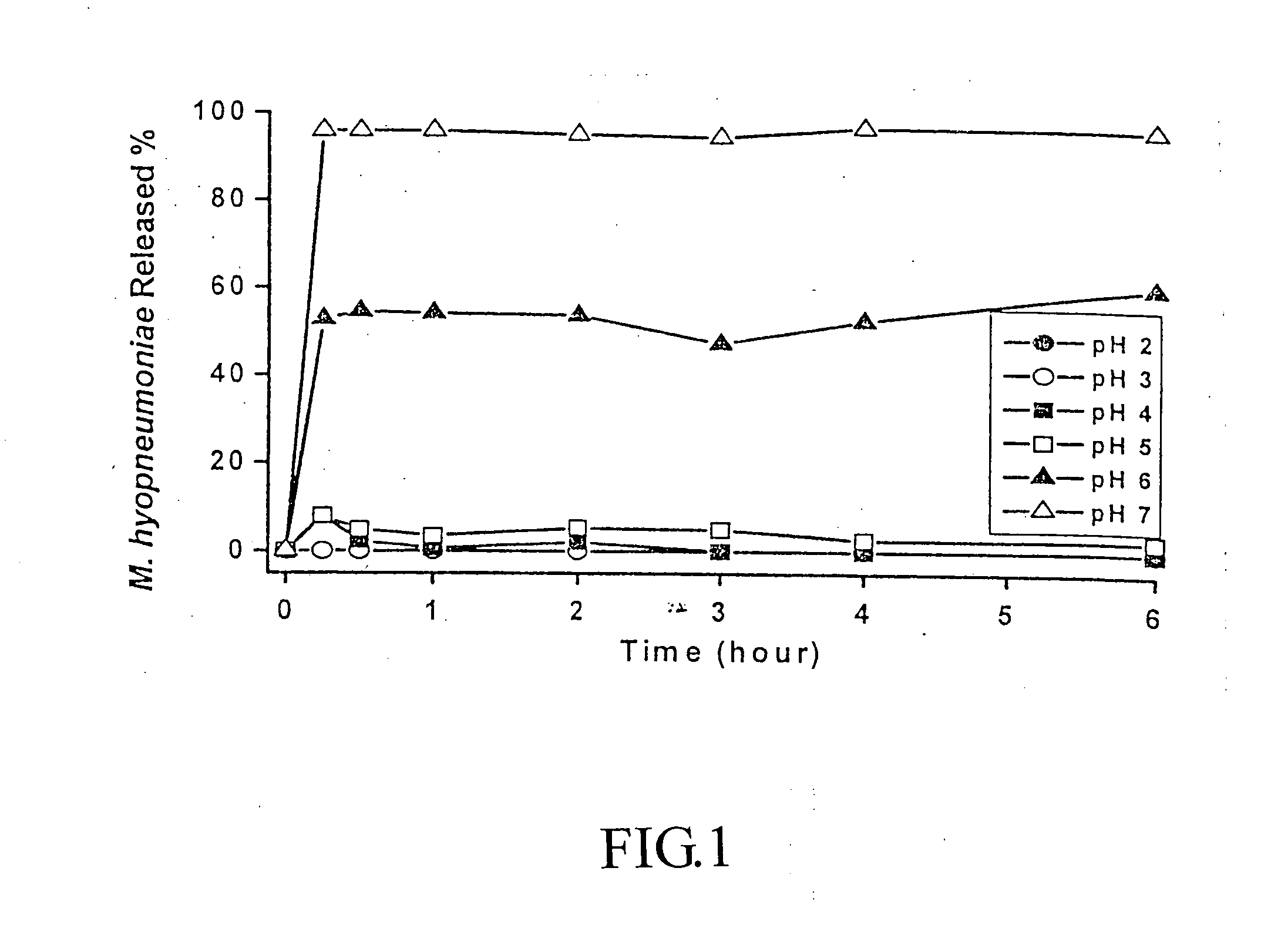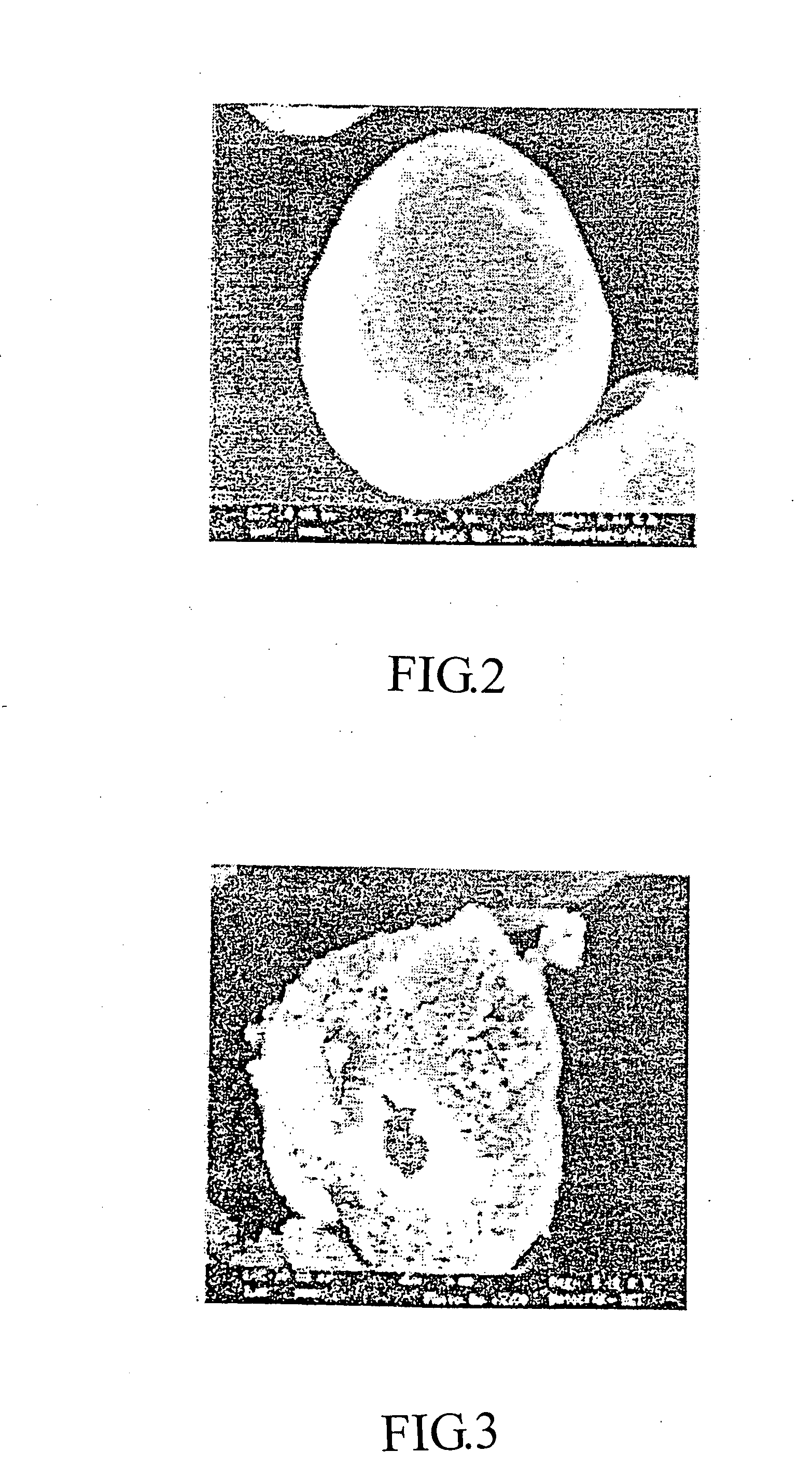Probiotic composition having acid-resistant enteric coating
a technology of enteric coating and probiotic composition, which is applied in the direction of biocide, food shaping, medical ingredients of bacteria, etc., can solve the problems of poor health of consumers, increased health risk, and high prevalence rate of cholesterol and triglyceride in livestock, such as pigs, so as to facilitate feed digestion and improve the resistance against diseases. , the effect of increasing the digestibility
- Summary
- Abstract
- Description
- Claims
- Application Information
AI Technical Summary
Benefits of technology
Problems solved by technology
Method used
Image
Examples
example 1
[0018] In preparation, preparing the bacterial broth containing the probiotic bacteria, the enteric coating having water-solubility and acid-resistant property, and the excipient. Then, the bacterial broth is mixed with the enteric coating and the excipient. The mixture is processed by co-spray drying to form a plurality of microencapsule in a powder form. After dried, sampling the microencapsule for measuring counts of the probiotic bacteria thereof. Referring now to Table 2, the coating properties of the microencapsule having different enteric coatings of eight experimental groups of probiotic compositions according to Table 2 of the preferred embodiment of the present invention are listed. The EC-0 group as shown in Table 2 has an average coating rate ranged from (80±2)% to (81±4)% when the probiotic bacteria are selected from PS551 or L103. The probiotic survival rate of the L103 in an endospore form is 96%, approximately about 100%. The probiotic survival rate of the PS551 is 6...
example 2
[0019] As described in Example 1, the probiotic composition is coated with the enteric coating, and process by co-spray drying to form a plurality of microencapsule in a powder form. The probiotic composition having the probiotic bacteria PS551 is microencapsulated and evaluated its acid-resistance against gastric acid (HCl) as shown in Table 3. In a dissolution experiment, it was found that the EC-0, EC-0.5, EC-1, EC-2 and EC-41 groups of the probiotic compositions as shown in Table 3 have no acid-resistance. Although the enteric coatings of the EC-0, EC-0.5, EC-1, and EC-2 groups of the probiotic compositions are not degraded or dissolved in an acidic solution, the acidic solution (0.03N HCL) can penetrate through the enteric coatings to be in contact with the probiotic bacteria (PS551) so as to reduce the probiotic survival rate thereof (only about 0.02%-0.3%). In a preferred embodiment, the present invention further contains an antacid material (economic available product: Magal...
PUM
| Property | Measurement | Unit |
|---|---|---|
| Percent by mass | aaaaa | aaaaa |
| Percent by mass | aaaaa | aaaaa |
| Percent by mass | aaaaa | aaaaa |
Abstract
Description
Claims
Application Information
 Login to View More
Login to View More - R&D
- Intellectual Property
- Life Sciences
- Materials
- Tech Scout
- Unparalleled Data Quality
- Higher Quality Content
- 60% Fewer Hallucinations
Browse by: Latest US Patents, China's latest patents, Technical Efficacy Thesaurus, Application Domain, Technology Topic, Popular Technical Reports.
© 2025 PatSnap. All rights reserved.Legal|Privacy policy|Modern Slavery Act Transparency Statement|Sitemap|About US| Contact US: help@patsnap.com


